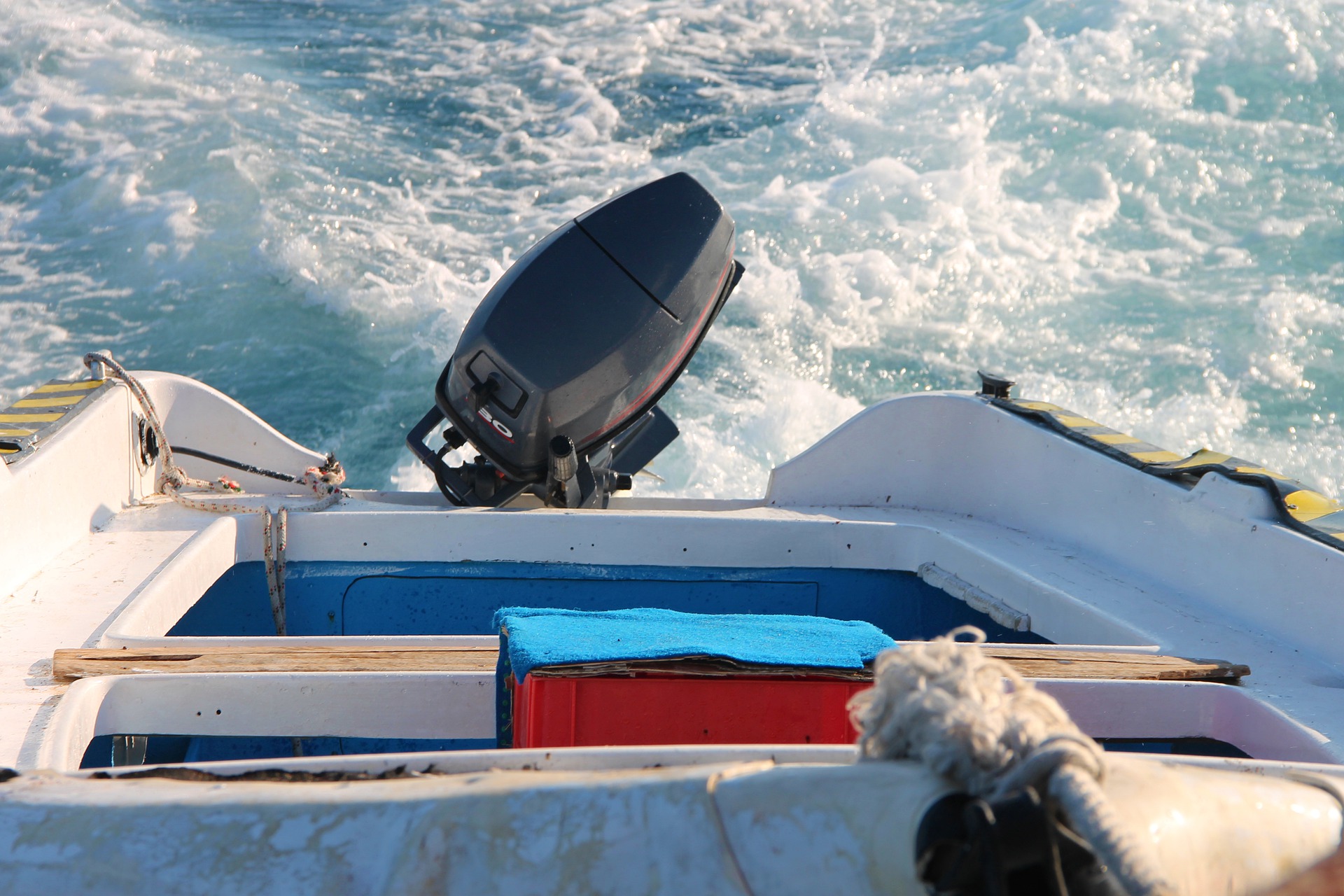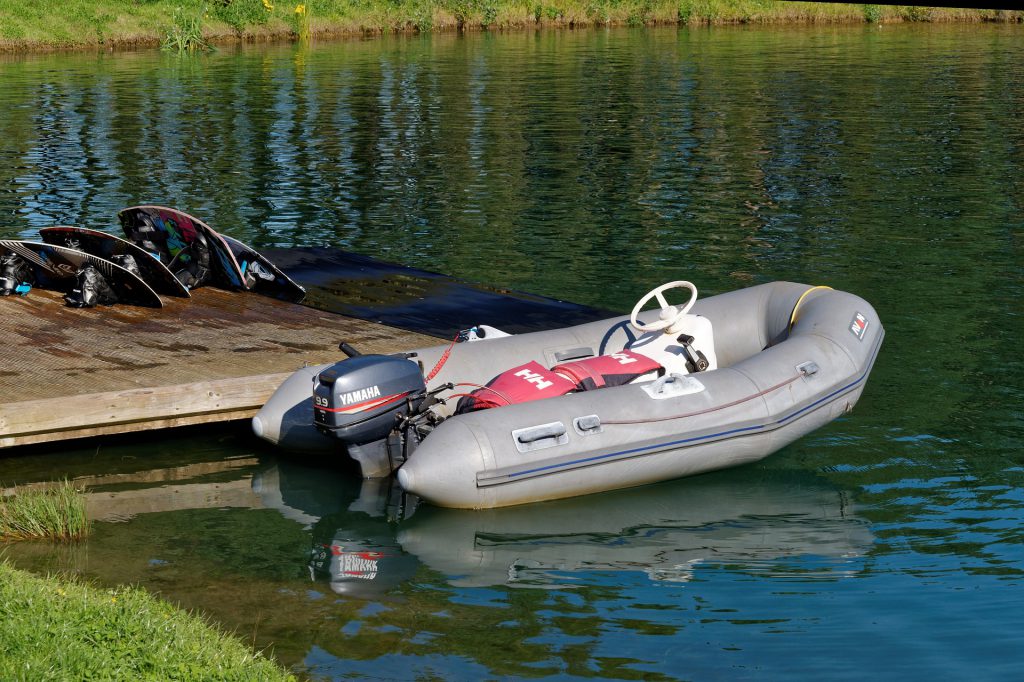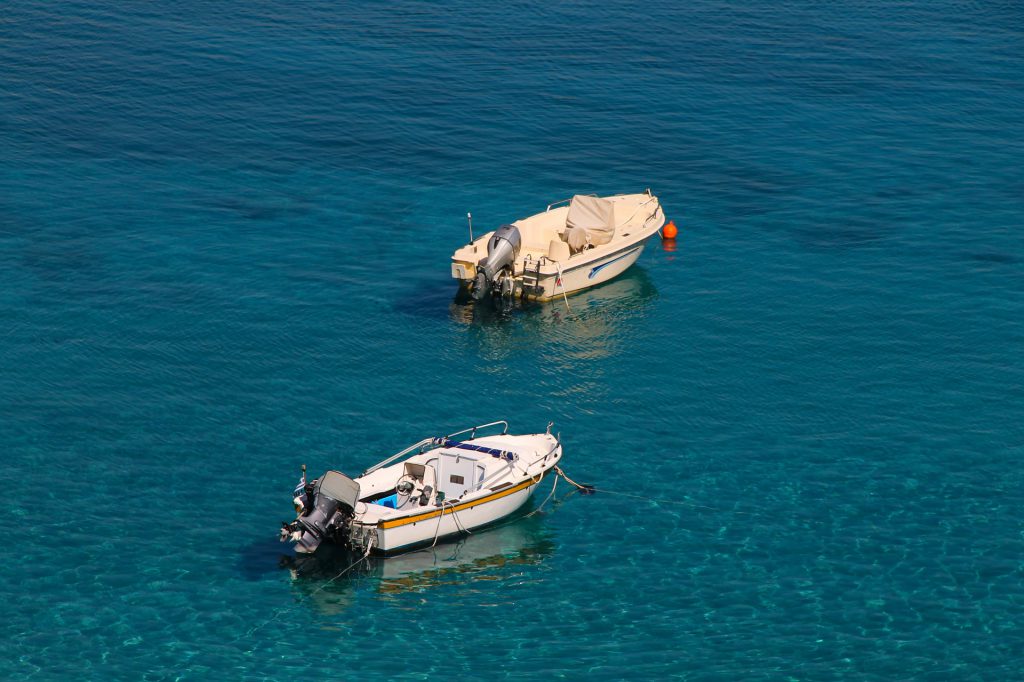So, Your Outboard Won’t Start…
June 17th, 2020 by team

Small outboards give us the freedom to roam away from the dock and past the mooring field. Unless you’re booked into a slip, an engine that won’t start puts a major crimp in your plans, whether you’re headed out for a weekend or living on the hook.
With minimal tools and experience, what are some quick things you can check to get it going again?
The Three Things
A gasoline engine needs three things to run, and it is almost always a failure or blockage of these three things which causes failure. In order of likelihood to be the problem, they are:
- Fuel – is the engine getting sufficient fuel for combustion?
- Spark – gas engines rely on spark plugs to ignite fuel in the cylinder.
- Air – combustion requires air, nothing burns without it.
One of these usually causes the problem, and you may find a quick fix to get on with your weekend or vacation. Maybe you’ll need a visit to a marine chandlery, but you might skip taking your engine to the dealer.

The Quick, Silly Checks
Before getting too involved in troubleshooting, a few quick checks can sort several problems. These may sound dumb, but operator error happens to all of us. So for the quick list of “reasons you might not want to tell anyone you couldn’t start your engine,” make sure:
- There’s enough fuel in the tank. It seems obvious, but forgetting to check is easy. Not all tanks have pickups deep enough to reach every ounce; even with a little fuel sloshing in the tank, it may still be effectively empty.
- The fuel primer bulb is pumped until firm. Fuel lines need to be full and the carburetor primed.
- The tank vent is open. The engine may start then stall as the it starves for fuel.
- The kill switch is in place. Is it firmly and correctly seated? Pull it out and re-seat it.
Fuel Problems
Gasoline in a small outboard flows from the tank, through the fuel line and primer bulb into the engine fitting, through a fuel filter, to the fuel pump, to the carburetor. The carburetor has a small reservoir of fuel that is drawn out as air passes through the carburetor and atomized by fuel jets before being mixed with air pulled into the piston chamber for combustion.
Pumping the fuel bulb primes the engine and pressurizes the fuel line. Once the engine is running, the mechanical fuel pump will keep it flowing. A blockage or constriction of fuel flow will keep your engine from starting.
Old or Dirty Fuel
Old or dirty fuel is the top reason for engine failure. Moisture accumulates in sitting gasoline and prevents combustion. Many places add alcohol to gas, which exacerbates the problem as the alcohol absorbs water and increases contamination.
If you have doubts about the age and cleanliness of your fuel, borrow a tank of fresh fuel to test your engine, or dispose of your old fuel and start with a fresh tank. If possible, get fuel without alcohol added. Many marinas sell this; the added expense is usually worth it for headaches saved. Note that old or dirty fuel can lead to a fouled carburetor.

Check the Fuel Bulb and Lines
Does the fuel bulb get hard when you pump it? If it doesn’t disconnect the fuel line from the engine and pump the bulb. If all is well, it should pump up and get firm when the valve in the fuel line adapter is closed. Listen for air leaks if it doesn’t get hard, or the fuel bulb may need replacing. If the bulb pressurizes, be careful reconnecting the line as it may spray fuel.
Inspect the fuel line for leaks and kinks to make sure fuel can flow.
Watch the Fuel Filter
Fuel filters may need periodic replacement or cleaning – consult your owner’s manuals for more details. Remove the cowl on your engine and trace the fuel line to the filter. If it is translucent, look closely while pumping the primer bulb. You should see fuel swirling and moving through the filter. If the filter is empty, your problem is in the line. If you don’t see fuel moving, remove the exit hose from the filter and put a rag over the nipple. Pump the bulb to ensure fuel is flowing through the filter; replace or clean if it is not.
Carburetor Problems
These are more difficult to diagnose and require skill with mechanical repairs. Carburetor problems are not uncommon and will cause failure to start and run. While troubleshooting and rebuilding carburetors is outside of the scope of this guide, we can give you a few tips.
Fuel left in engines and tanks can leave buildup, and the carburetor has several small fuel jets and pins with tiny openings that can get blocked. If you suspect a carburetor problem and you feel comfortable doing it, a careful cleaning and rebuild is not that difficult. Cleaning those tiny pinholes in the jets and channels in the carburetor body is the goal.
One way to prevent carburetor fouling and gum-up is to empty the carburetor bowl when you aren’t using the boat. If you know you won’t be using the boat for more than a week, before you put the boat away disconnect the fuel line and let the engine run until it stalls out. If your carburetor has a drain plug, you can drain it there instead of running the engine.
Spark Issues
Inside the engine, gasoline vapors and air get sucked into the combustion chamber by the piston, then compressed as the piston strokes back up. When it reaches the top of the stroke, the spark plug make a spark and ignites the fuel/air mix.
Where does the spark come from? In brief, magnets and coils around the engine create electricity as the engine spins, the ignition coil steps this to a high-voltage spark at just the right time to ignite the fuel. Diagnosing most of spark-related problems takes a little electrical knowledge and a multimeter. Without a multimeter, there are still a few things you can check.
- Check ignition wires. Inspect for damage or corrosion and make sure they’re not loose.
- Inspect the Plugs. Disconnect the ignition wires and pull out the spark plugs – the tool kit that came with your engine usually has a wrench. Look for corrosion, carbon buildup, or damage to the electrode. If dirty, you can clean the electrode and try again. Damaged plugs should be replaced.
- Test the plug. With the plug pulled out and connected to the ignition wire, ground the plug against the engine block. Don’t hold the plug in your hand, but brace it against the block or hold it with a rag or a glove. Give a pull on the starter cord. If all is well, a bright white-blue spark will jump at the electrodes. If you get a dull spark, no spark, or a spark off the center of the electrode, try a new plug.
If you were trying to start the engine before pulling the plug, the plug should be wet from fuel. If it isn’t, there may be a fuel flow problem to the combustion chamber.
Air Flow
Constricted airflow to the engine can prevent it from running or starting. Most engines have vents in the cowl cover. Remove the cover, flip it over and look along the aft edge of the cowling. There should be vents. They may be covered with a one-way flap, filter or screen. Make sure there is a clear air passage through the vents. Remove any buildup or constrictions.
Most engines have an air filter attached to the carburetor. Inspect it for blockages. If you can, open it up and look inside. If there’s a filter element, make sure it’s not clogged or blocked.

When it Happens
It’s good to have a basic understanding of these checks you can do without many tools. If your engine won’t start when you’re on the boat, you’ll have more tools. But if you get stuck at a dinghy dock away from the boat, a little knowledge may help you get back to the boat and through the weekend.


June 22, 2020 at 2:07 pm, Kent Robertson said:
Thanks for this post. Even using alcohol free gas, and running the carbureydry when leaving for more than a few days, a fouled carburetor is almost always the problem on any dinghy outboard I’ve owned. I carry a set of brass picks as well as carburetor cleaner, and now a small compressor and sonic cleaner. I have added a Racor prefilter on the transom that triples the time between cleanings.
June 28, 2020 at 5:15 pm, robert scholtes said:
I have too pump the bulb while moving my 9.8 Tohatsu from stalling.
January 26, 2021 at 9:56 pm, Nicos Tescos said:
Thank you. Great information!
June 24, 2021 at 12:03 pm, RANDY ROBINS said:
4 horse evinrude wont fire. It sat for many years. Fresh fuel, spark at the plugs, no go. Even squirted some fuel in cylinders. No go. Then tried a little quick start in cylinders. Nope! Perhaps not good enough spark? Haven’t taken compression yet.
July 10, 2023 at 9:44 am, Swan said:
I have a 96 evinrude 4hp and I’ve had the same problem. Mine was fixed when I took the carb out and cleaned it taking the jets out and making sure they were clean with compressed air and carb cleaner
June 28, 2022 at 1:15 pm, Best 12 why wont my boat start - charlesadvisors.com said:
[…] Quote from the source: … […]
July 16, 2023 at 1:40 pm, Jon Allen said:
Thanks for your article.